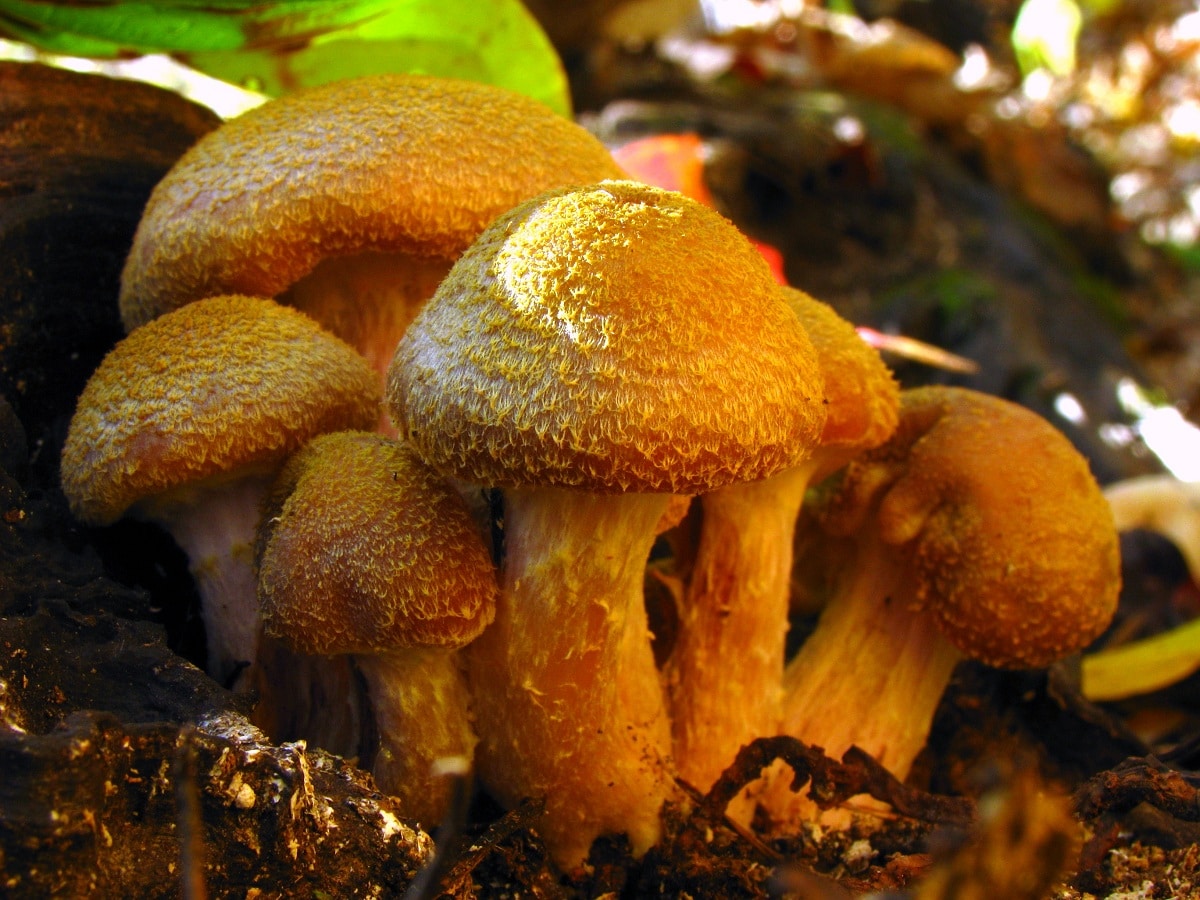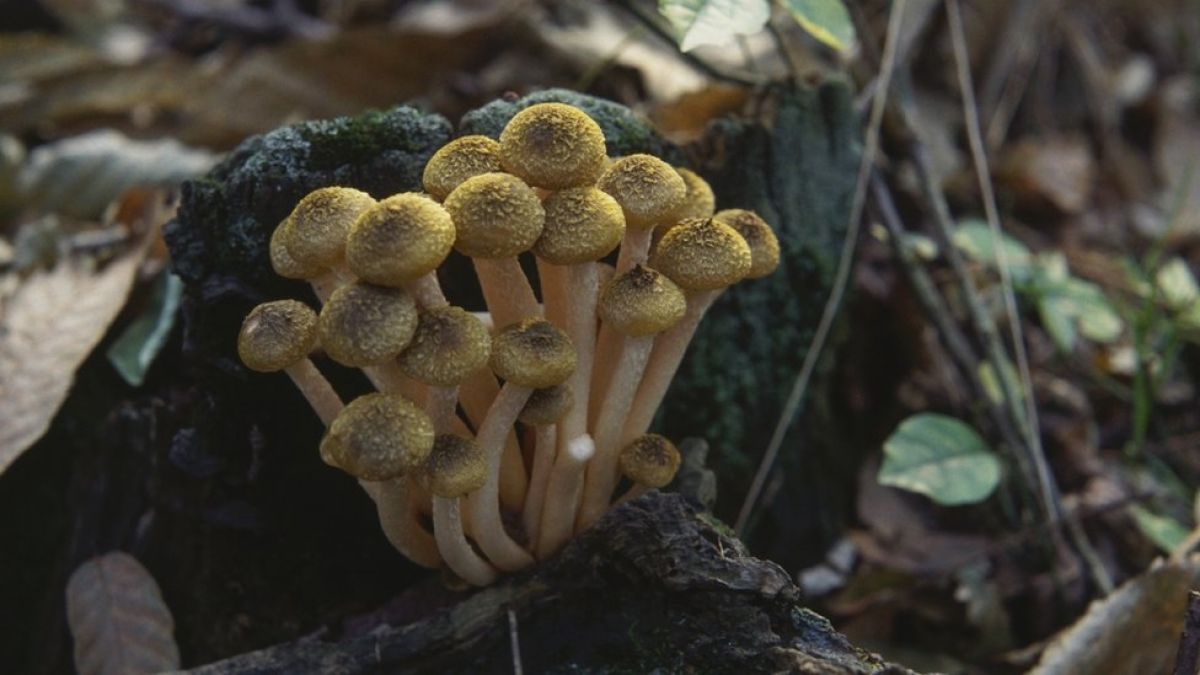
Despite what you may think, one of the largest living organisms in the world is a mushroom. Today we are going to talk about the French armorial bearings. It is a species of fungus that measures about 70 hectares, being one of the largest living organisms on the planet. The specimen that exists in Michigan weighs 400.000 kilos and is 2.500 years old.
In this article we are going to tell you all the characteristics, habitat and curiosities of the Gallic armillary.
Key features

Image - Flickr / Patrick Schifferli
Hat and foils
This mushroom has a hat that goes from a size from 5 to 8 centimeters in diameter. When the specimen is young it has a globose and somewhat convex appearance. As it develops and reaches maturity, the hat is planned. This is an indicator of the age of the fungus. The hat has a fine margin and is curved when young. When it is adult we can see the margins more flattened and curved.
Its cuticle is dry in appearance and matte in color. It is covered by fleeting, raucous-colored scales. This cuticle thickens in the center of the hat and is ocher-brown in color. It also turns the center a darker color.
Its blades are quite numerous and tight between them. What is characteristic is that they are unequal in size. Its color ranges from white to cream and it has spots when it has reached its adult stage.
Pie and meat
As for the foot, it is robust and cylindrical in shape. It has a bulb at the base and shades of brown and reddish. These colors get darker as we get to the base. It has greenish yellow bloom on the bulb. It is one of the fungi that has a ring in the highest part of the foot and that has a cottony texture. This ring has a whitish color although externally it appears more yellowish. When it reaches maturity it begins to shrink and cake.
Finally, its meat has a hard texture and a whitish color.
Habitat of the French armorial bearings
The growth season of this fungus is in autumn. We can find it forming small groups that are parasitizing the wood of those deciduous trees. Most of the time they are found on the ground but other times we find them in the stumps and trunks of these deciduous trees. These mushrooms are terrestrial and are associated with the roots of plants below the surface.
The area of distribution of the French armorial bearings expands from North America, Europe and Asia. It has also been possible to find the western market of the province of South Africa. It is thought to be introduced into this area from other potted plants that were imported from Europe during the first colonization of Cape Town. This mushroom is not found in Scandinavian countries since they are from very cold climates such as Finland or Norway.
One of the curiosities of this mushroom is that it is edible only when it is young. It is necessary to cook them first with water and throw away the water with which it has been cooked to avoid the bitter taste. It is not recommended to consume raw as it can cause some digestive disorders. Complete cooking is recommended since the bitter taste is more powerful when it is raw or undercooked. It is also recommended to consume only a small portion in the beginning since some people may experience an upset stomach. In this way, we are testing how much of this mushroom we can assimilate without any negative repercussions.
Normally, all those who have tasted this specimen describe it as a slight bitter taste and a sweet smell as if it were reminiscent of Camembert cheese.
Main confusions of the French armorial bearings
And it is that this mushroom can also be confused with other similar species. One of them is the Armillaria calvescens. It has a similar appearance and can only be reliably distinguished by observing some microscopic features. It can be known that the Armillaria calvescens it has a more northern distribution. It is rarely found in North America.
Another of the confusions of the French armorial bearings is Armillaria mellea. The main difference is that this specimen has a more delegated stem and can be distinguished in a more definitive way by the absence of pincers at the base of the basidia. Perhaps the main confusion since they have an identical appearance is the Armillaria cepistipes. The main differences are due to geographic distribution and microscopic characteristics. Therefore, the French armorial bearings It is not a specimen to be collected by amateurs. A great deal of knowledge is needed regarding these fungi so as not to get into any confusion that can make us collect toxic specimens.
Curiosities

In the late 1980s, a gigantic specimen of this fungus was discovered in the subsoil of a Michigan forest. The full spatial scope of this organism and its mutational dynamics were totally unknown at that time. Later he studied this huge underground fungus and they estimated that the great mass of fibers that make up the fungus was about 1.500 years old. Not only was this the important thing, but it also came to weigh about 100.000 kilos and spread over an area of 15 hectares.
After new studies and depth of this organism it is known that it weighs around 400.000 kilos and is more than 2.500 years old. The extension has increased during these years and they occupy more than 70 hectares. The studies have been carried out with more modern tools and a sampling and analysis of the genome. This makes the French armorial bearings is considered one of the largest and oldest living beings on the planet. And it is that it forms a network underground mycorrhiza that is heavier than 3 blue whales together. These mycorrhizae are associations between fungi and plant roots.
I hope that with this information you can learn more about the Gallic armillary.